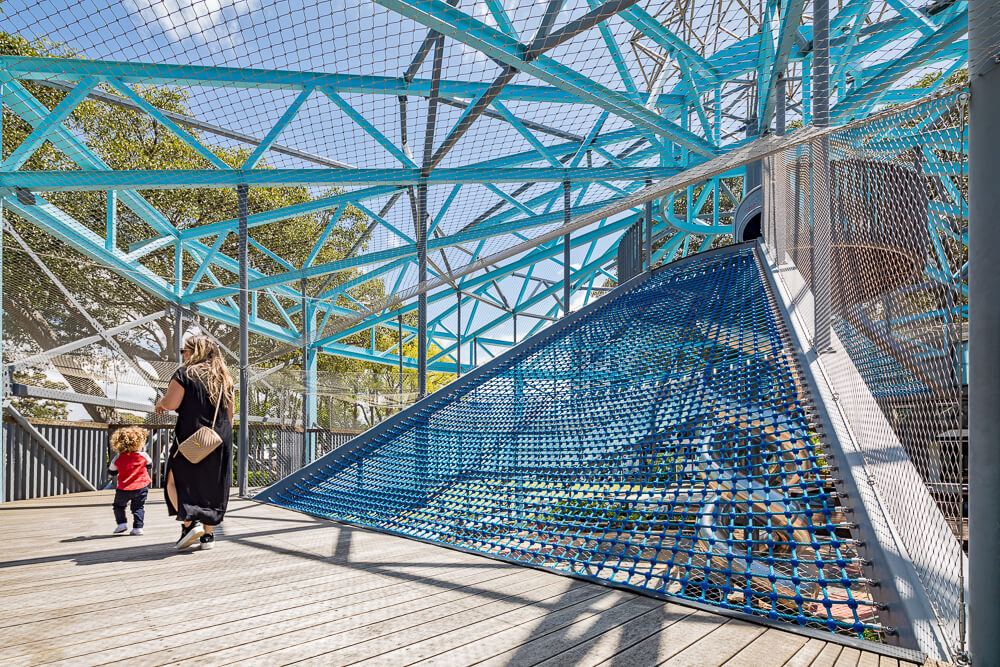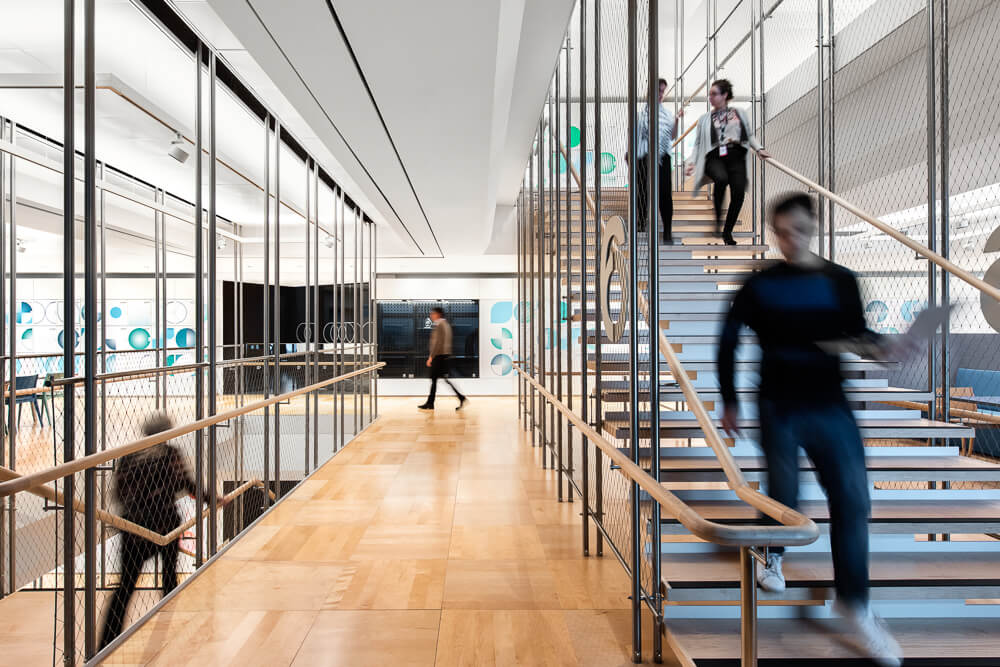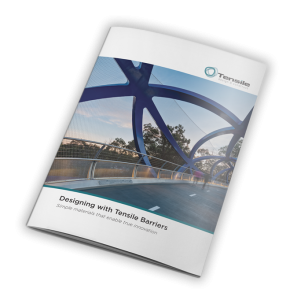Marine-grade stainless steel Webnet mesh offers many advantages over traditional materials for modern barriers.
Here are some of the benefits of Webnet for infrastructure barrier solutions, compared to 358 welded mesh, Chainlink and glass.
Webnet vs. 358 welded mesh for modern barriers
358 welded mesh is a traditional security fence material made from galvanised steel with a zinc-alloy finish. It is a tough and non-climbable material that is compliant with Australian Standards.
But it lacks many of Webnet’s advantages:
- Span capacity – unlike Webnet, which has span capacity of up to 6,000mm between posts, 358 mesh is limited to set panel sizes. This results in smaller spans and reduced scope for customisation.
- Strength-to-weight ratio – both materials have high strength, but the weight of Webnet per m2 (at 0.5 to 2.9 kg) is many times lower than that of 358 mesh (approximately 9kg) for the same volume of material.
- Flexibility – while Webnet is light and malleable, 358 mesh is a heavy, rigid material. This makes it unsuitable for the non-linear structures that Webnet is able to accommodate, such as curved bridges or fences.
- Transparency – 40mm x 2mm Webnet (a size often used in barriers) has an open area of 84.3%, almost twice that of 358 mesh at 43%.
- Longevity – Webnet has a design life of 50 years compared to 10 years for 358 mesh.
- Low maintenance – with its reduced corrosion-resistance and shorter design life, 358 mesh comes with higher maintenance and replacement costs than Webnet.
- Reduced handling and transport costs – 358 mesh needs over five times the number of pallets than Webnet to transport the same volume of material.
- Sustainability – Webnet is made from 70% recycled content in facilities that run on renewable energy, and its embodied carbon level is about one-quarter that of 358 mesh.
- Low framing requirements – 358 mesh has higher framing needs than Webnet which results in higher material volumes (and higher costs) for installations.
- Aesthetics – while 358 mesh is a harsh industrial material in terms of appearance, Webnet has a light translucent profile that can enhance architectural design.

Webnet vs. Chainlink for fence barriers
Chainlink is a fencing material made from bent galvanised steel wires that hook together, unlike Webnet which is a woven type of mesh.
The differences between the two include:
- Versatility – Chainlink’s rigid structure restricts it mostly to fencing, whereas Webnet suits a very wide variety of barrier and facade applications.
- Maintenance – Chainlink is more corrosive and high maintenance than Webnet.
- Longevity – Chainlink has a short lifespan, offering warranties of one year.
- Stability – Webnet provides tensile resistance and high dimensional stability, making it (unlike Chainlink) suitable for load carrying.
- Customisation – Webnet comes with a much wider range of choices regarding aperture size and shape, wire rope diameters, height and length, colours and more.
Webnet vs. glass for transparent barrier solutions
Glass is often a material of choice for transparent barriers, such as on indoor atriums. However, Webnet has some advantages over glass:
- Non-climbability – Webnet can be made non-climbable by using a smaller aperture-opening size or by installing full-height barriers. For a glass barrier to be non-climbable, it needs to have very large, heavy panels, adding to installation and material costs.
- Longevity – the lifespan of glass as a barrier material is less than half that of Webnet.
- Airflow – while both materials are transparent, Webnet facilitates greater airflow.
- Flexibility – glass is rigid, making it harder to carry and less customisable.
- Cleaning – glass tends to attract smudges, dirt and dust, which can reduce its transparency.
- Framing – unlike glass, Webnet does not require a subframe.
To see examples of Webnet modern barrier solutions, go to our project page. For a discussion or to find out more about Webnet for modern barriers, call us today!







































